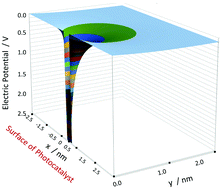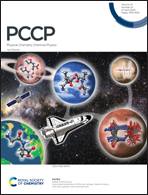Intrinsic nature of photocatalysis by comparing with electrochemistry
Abstract
Photocatalysis has been gathering much attention because of the unique applications of photoenergy for environmental cleaning and solar fuel production. Electron transfer (ET) at the solid–liquid interface, which initiates photocatalytic reactions, has been the subject of electrochemistry, and hence the reactions are often analyzed in terms of electrochemistry. However, how extensively the concept of electrochemistry can be incorporated has not been discussed so far. In this report, by comparing with electrochemistry, the intrinsic nature of photocatalysis is disclosed and the limitation of the use of the concept of electrochemistry was pointed out. The electric potential near the photocatalyst surface was calculated and visualized, showing a potential gradient similar to that at the electrode surface but localized near the positive hole. Since the frequency of the ET at the photocatalyst surface is limited by the photon absorption, the investigation of photocatalysis in terms of energy states and kinetics should be different from those for electrochemistry. Since semiconductor photocatalysts are not wired to the electric source, the estimation of energy band positions may be altered, which was actually discussed in terms of the band alignments of anatase and rutile TiO2 crystals.

- This article is part of the themed collection: PCCP Perspectives


 Please wait while we load your content...
Please wait while we load your content...